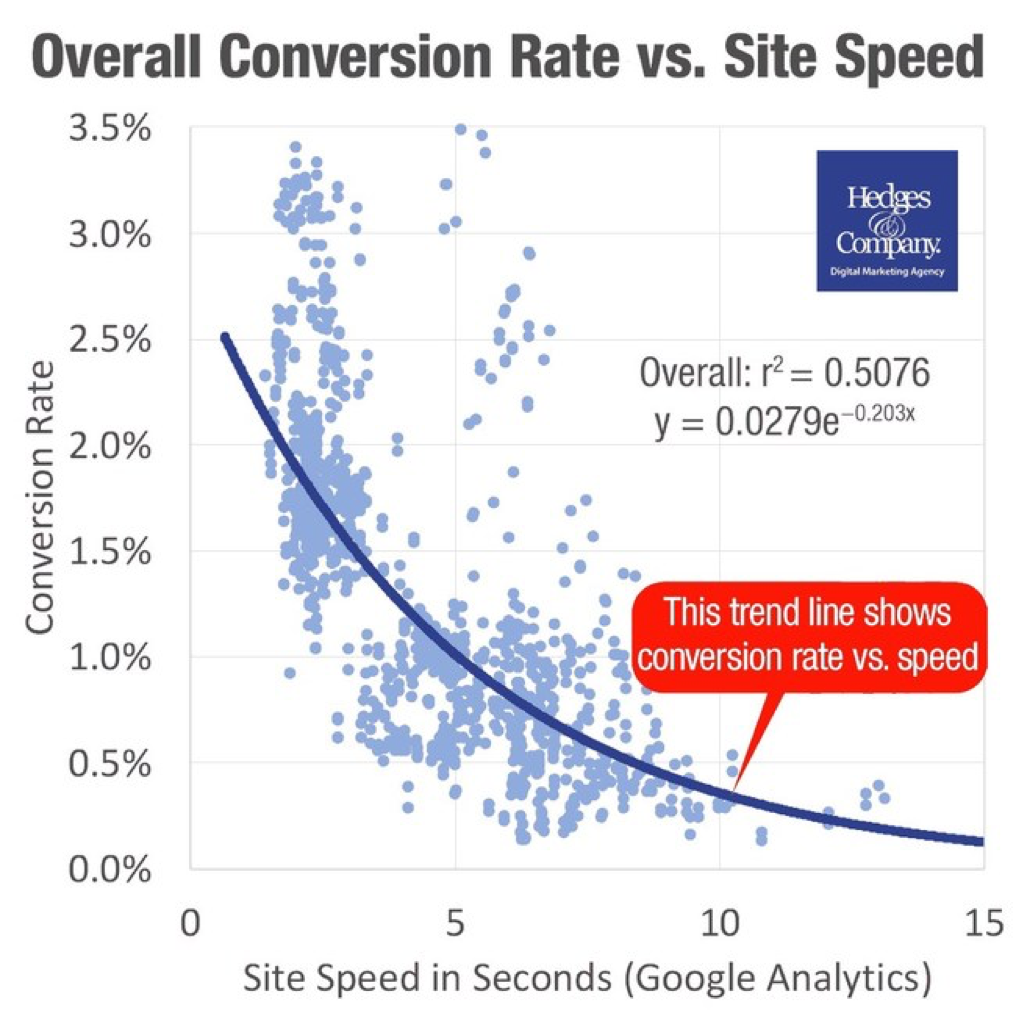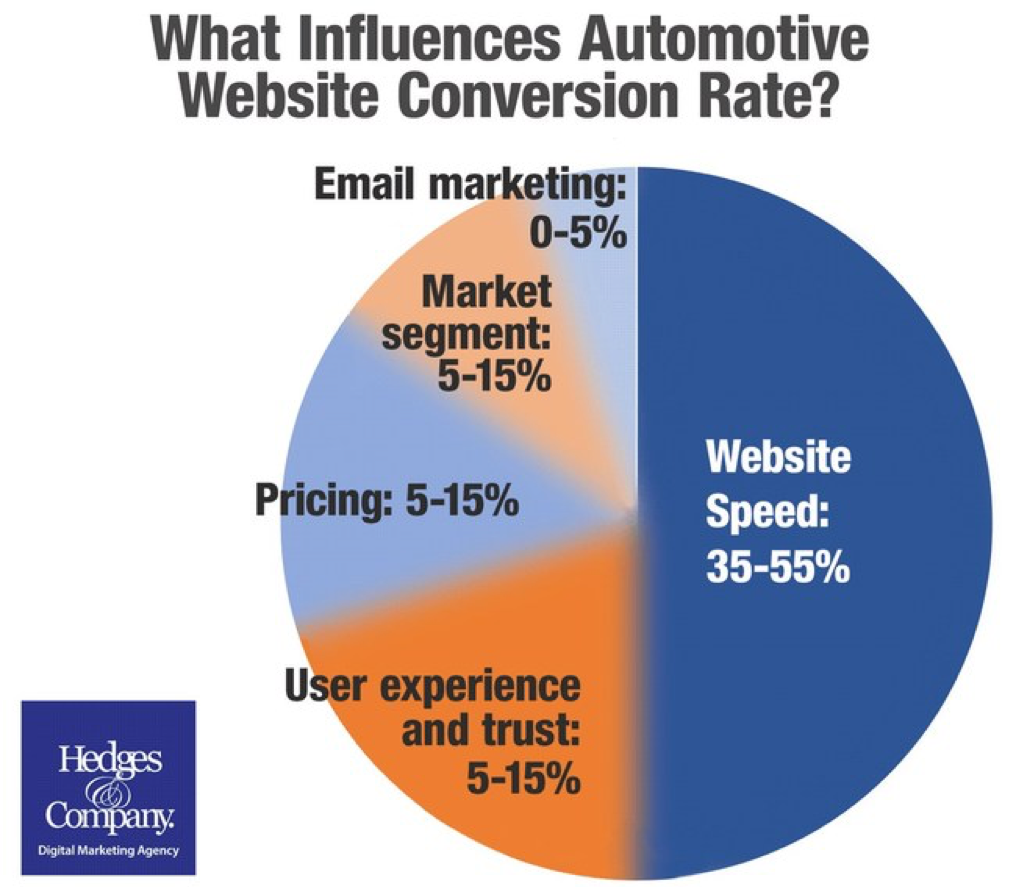New research from Hedges & Company identifies key areas impacting e-commerce conversion rates. The research data points to Site Speed, User Experience, Product Pricing, Market Segment and Email Marketing as keys to improving a site’s conversion rate and online sales.

Millions of transactions over 3-1/2 years shows the impact of site speed (bottom axis) on eCommerce conversion rate (left axis) for automotive parts and accessories websites. The blue line shows typical conversion rates.

The Hedges & Company Conversion Rate Optimization Case Study shows site speed accounts for about half of the conversion rate for automotive parts and accessories websites.
Hedges & Company, a digital marketing agency serving enthusiast markets including the automotive aftermarket, OEM parts and powersports industries, analyzed millions of online purchases from more than 100 parts and accessory websites in the U.S. and Canada. The data covered transactions from 2017 through mid-2020 and includes retailer websites and manufacturer websites selling direct to consumer (DTC).
“This new Conversion Rate Optimization Case Study is useful for aftermarket businesses wanting to improve efficiency and grow revenue from their eCommerce websites,” said Jon Hedges, Principal at Hedges & Company. “It shows which areas of a website to look to improve and how they will impact the conversion rate.”
Site speed is by far is the most significant factor. How fast a website loads as reported in Google Analytics attributes to nearly 50% of an eCommerce site’s conversion rate.
Using statistical analysis and predictive modeling, Hedges & Company found an average conversion rate of 0.5% for automotive websites that load in eight seconds. Websites that load in five seconds doubled that conversion rate to 1.0% and sites that load in three seconds have a 1.8% average conversion rate.
The company also looked at mobile conversion rates. The data showed site speed had a similar impact on conversion rate for customers shopping on their phone.
The results of the Conversion Rate Optimization Case Study are published here: https://hedgescompany.com/blog/2020/07/conversion-rate-optimization-case-study/
The data pointed to five main categories affecting a website’s eCommerce conversion rate. The categories are:
Site speed: About 50% of a site’s conversion rate is influenced by site speed. It is how quickly shoppers can see and interact with site content.
User experience and trust signals: This has a 5% to 15% effect on a site’s conversion rate. User experience includes the site’s functionality, such as navigation or site search. It looks at the accuracy and completeness of product information. It includes trust signals and whether the company publishes a street address, or badges indicating secure and protected transactions. It can be the look and feel of a website: does it look contemporary or outdated? These are the factors that impact a user’s experience and comfort level with a website.
Product prices and shipping cost: This has a 5% to 15% effect on a site’s conversion rate. Pricing looks at overall competitiveness and how it fits into the market. If a site carries popular brand name products and at average or minimum advertised price (MAP) pricing, the impact is neutral. If prices are higher, it can reduce the conversion rate.
Market segment: This factor affects 5% to 15% of a website’s conversion rate. This addresses the market you sell in and the competitive landscape. If a business sells in a very competitive crowded market segment or serves a market segment with fewer direct competitors, the conversion rate will be impacted.
Email marketing: This factor affects up to 5% of a website’s conversion rate. This looks at whether a website had a well-managed email marketing program. The data showed customers who visit a website after receiving an email converted to buyers twice to ten times higher than the average shopper. Well-managed email marketing increases user engagement and conversion rate; however, if email marketing is overdone, it has minimal impact on the conversion rate.
The company has already created a conversion rate optimization tool where you can score your own automotive website. It is free to use and available here: https://hedgescompany.com/blog/2019/10/conversion-rate-optimization-tools/














